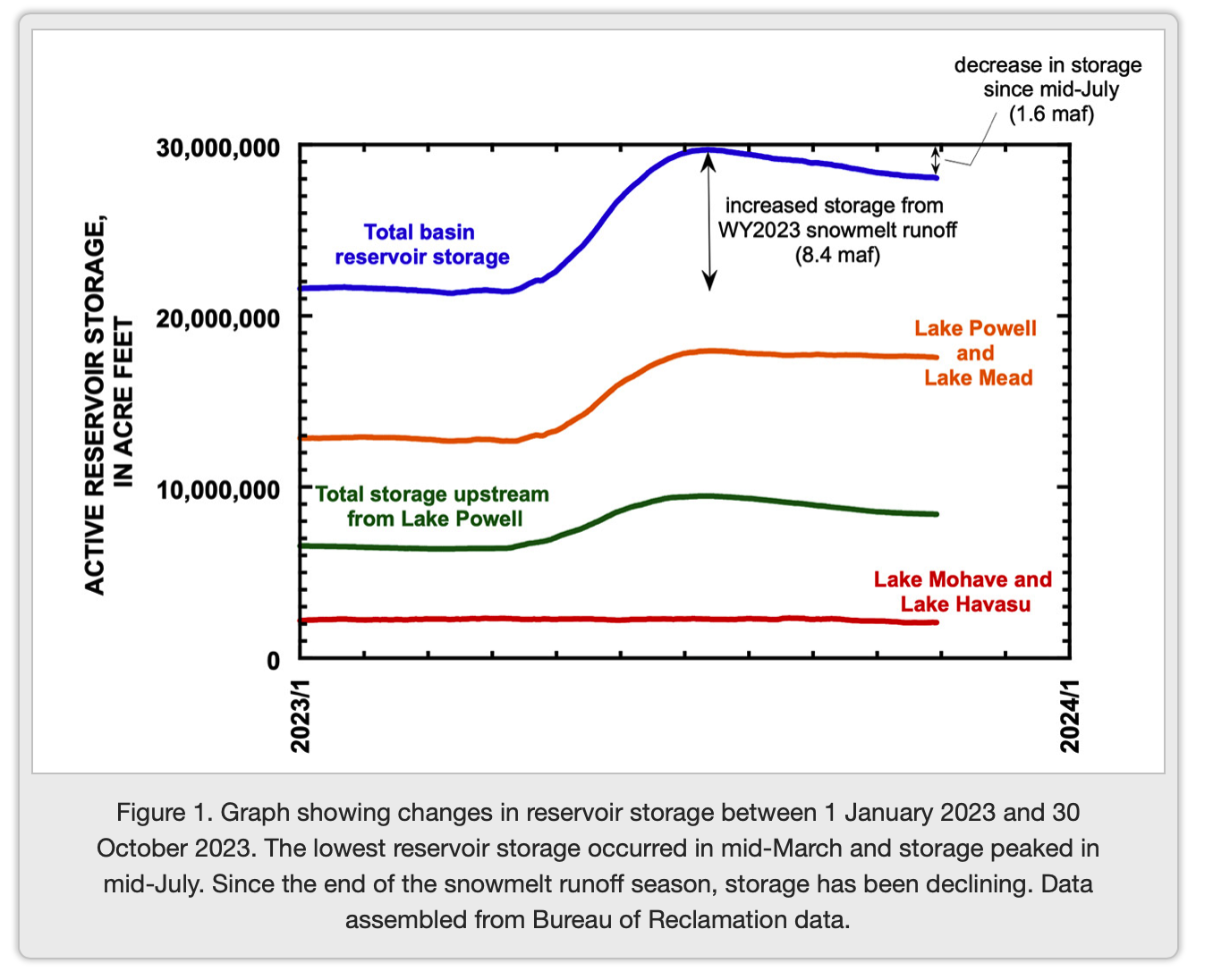Jack Schmidt
Utah State University Future of the Colorado River Project.
A few weeks ago, I posted a perspective demonstrating that we consumed or lost to evaporation the “gains” of Water Year (WY)2011, WY2017, and WY2019 within two years of each of those large runoff events. I cautioned that we should not feel smug about the wet year of WY2023. It is imperative for the Basin States, Tribes, and federal government to agree on ways to significantly reduce basin consumptive uses and losses lest we repeat the past and quickly consume the gains of WY2023. I also suggested that keeping track of the rate at which society consumes the increased reservoir storage from the WY2023 runoff season would be an easily communicated benchmark to track our ability to slow water consumption.
Another month of reservoir storage data are now available from the Bureau of Reclamation. How are we doing in conserving water?
THE DETAILS
Decline in reservoir storage occurs when reservoir evaporation and water released from reservoirs to meet consumptive use demands exceed inflows to those reservoirs.
During October 2023, total basin storage declined by 330,000 acre feet (af), of which the combined contents of Lake Powell and Lake Mead declined by 90,000 af. Most of the decline in basin storage was in reservoirs upstream from Lake Powell. To put these numbers into context, 330,000 af is more Colorado River water than the state of Nevada consumes in an entire year.
Since mid-July (when the snowmelt season ended) and 30 October reservoir storage declined by 1.6 million af, of which only 400,000 af was a decline in total storage in Lake Mead and in Lake Powell (Fig. 1). Most of that decline in storage—1.1 million af—was from reservoirs upstream from Lake Powell. To put these numbers into context, 1.6 million af is nearly as much Colorado River water as the states of New Mexico, Utah, and Wyoming have consumed annually, on average, during the 21st century.
The total decline in basin reservoir storage in these 3.5 months has been 20% of the “benefit” of WY2023. Let’s continue to keep track of the rate of decline in reservoir storage, lest we quickly overspend our surplus. Today, the contents of Lake Mead and Lake Powell are about the same as in late-June 2021, and we are far from recovering the system to the nearly full condition that existed in summer 1999. Although the wet year has taken the edge off the looming crisis of critical water shortage, we need to remember our long-term goal—continuing to work hard to conserve the bounty of WY2023.












